The continuing legacy of John Ferguson’s stained glass - Part 2
As we mentioned yesterday, Anne and Julie were lucky enough to be able to go and visit Andy Ferguson at his workshop in early April 2022. Andy worked with his father in his stained glass business after leaving school in 1977. Andy and his brother have thus continued the Ferguson and Papas Stained Glass legacy.
Andy describes learning the complexities of each element of the stained glass process as “a 20-year apprenticeship!”
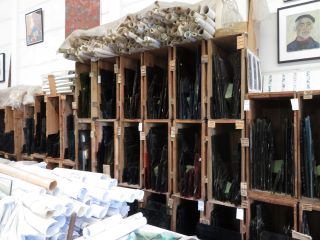
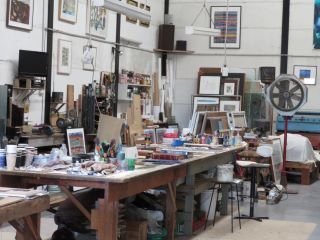
The level of expertise and strict discipline involved in this craft was certainly obvious as Andy explained and demonstrated the art of creating lead light and stained glass - the two main forms. Andy showed us one of his current lead lighting commissions in progress, a door which will have six glass panels with a daffodil design.
The process begins with a thumbnail coloured sketch of the window design, so the client can visualise the final result and approve the work. Then a black and white sketch, a cartoon is created. From this, the selection of glass and the cutting of each piece, to the exact millimetre, begins. Andy uses a very sharp "pen" which contains a very durable tungsten wheel which allows him to cut in either straight lines or curves (image below right).
Andy lays out the design according to the drawing and cartoon. He then cuts lead strips (again to the millimetre), in which each glass section will sit. When all the elements are complete, the lead borders are soldered together to hold all the pieces in place and give it strength.
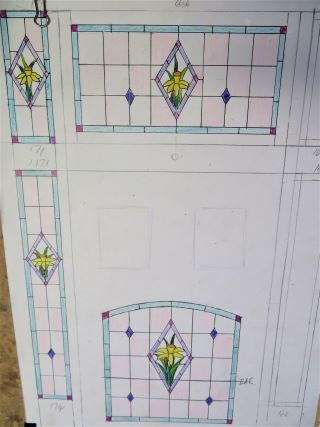
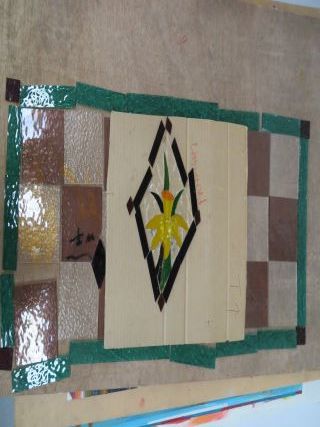
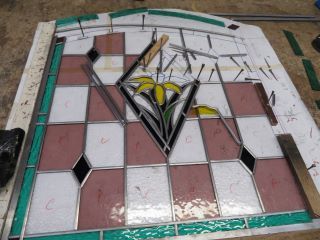
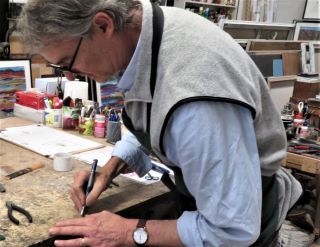
Some designs may instead use hand blown glass which is quite valuable (as it is handblown in a cylinder shape, then cut and laid flat whilst still hot), or thick slab glass, which requires a concrete construction, instead of strips of lead.
Andy buys different types of glass from sources in Australia and in Europe, all carefully stored in pigeon holes according to colour and texture groups.
He showed us samples of these different types of glass:
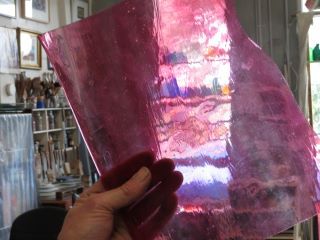
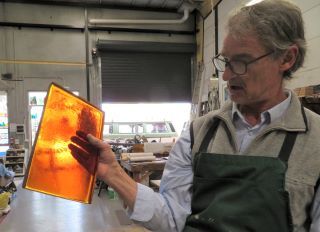
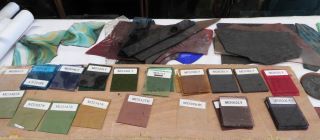
In some designs, images are also painted on to the coloured glass as well, then correctly termed stained glass. This is a detailed process in itself, using silver stain or other iron oxide paints painted onto the special glass used for the process, often in multiple layers, and fired in a kiln at each stage.
This layered painting process creates three-dimensional shading and depth such as can be seen in the expression of faces. Andy has a vast array of brushes, made of many sorts of fibres, to get the painting detail exactly right. Below is another of Andy’s current commissions, where he has hand painted the birds in the centre and designed the window to meet the client brief for the window to look like it is 100 years old!
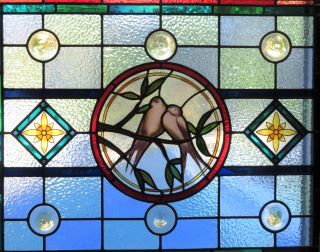
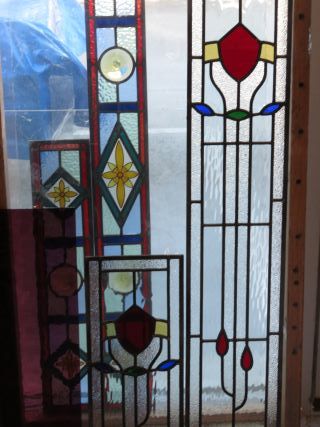
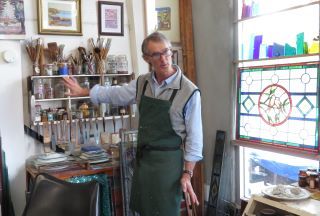
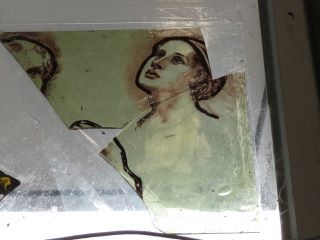
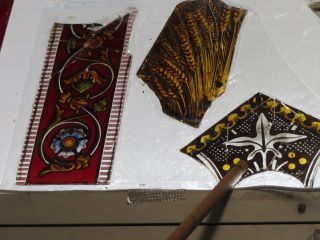
Andy now uses a modern flatbed kiln but the original small, yellow kiln used by his father still works and is very much cherished (below right).
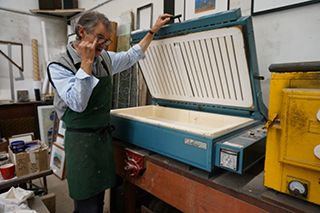
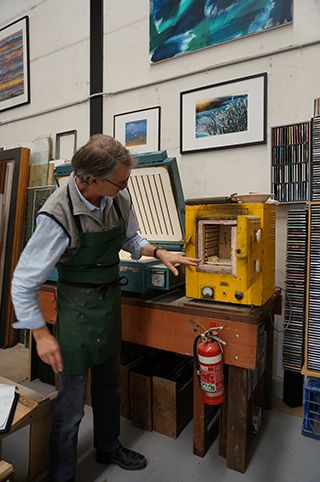
The following 3.54 minute video explains the whole process in technical detail if you are interested:
Tomorrow we will return to look at the design process of leadlight and stained glass making in a little more detail.
Footnotes
All images taken by Julie and Anne, copyright to Andy Ferguson ©

